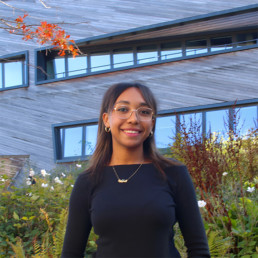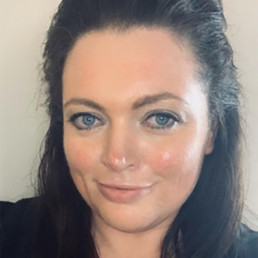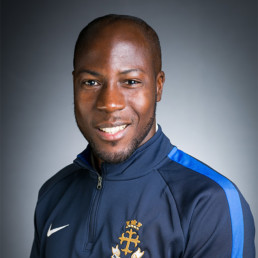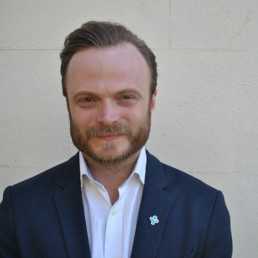Reflections on the Edurio EDI Summit

Written by Iona Jackson
Iona leads on turning Edurio’s national datasets into useful and impactful insights for trust and school leaders. Iona has worked on national reports focused on topics such as equality, diversity and inclusion, staff retention and pupil experience and wellbeing. She works closely with education leaders and industry experts to understand what the current position means for the sector, and where to go from here.
On June 21st, my colleagues and I hosted the Edurio EDI Summit, a day dedicated to promoting equality, diversity and inclusion within schools. Throughout the day we had guest speakers sharing their experiences in school as people with a range of protected characteristics, ran masterclass sessions with experts in equality, diversity and inclusion, and launched the first report from Edurio’s Equality, Diversity and Inclusion Review.
Among our guest speakers was Amy Ferguson, a female, lesbian, Black school leader, who explained her experiences at the intersection of multiple protected characteristics. We also heard from Abed Ahmed, a Muslim teacher with a stutter. We learned from Abed about the challenges of interviews when fluent speech is a challenge, and how the “usual” model of interviewing could be limiting the talent pool by assessing people on attributes that don’t dictate how well a person is able to teach young people.
The masterclass sessions covered topics from diversity to religion. Mandy Coalter encouraged attendees to understand the context using both individual stories and data when building action plans. We heard from David Hermitt about the changing role religion plays in the lives of White British/Irish children, and how that compares to their BAME peers. In another session, Jerrel Jackson talked about problems with labels, both the ones assigned to us by others and the ones we assign ourselves. We wrapped up the day with a close look at intersectionality, with Hannah Wilson (Diverse Educators) and Angie Browne. The session shone a light on the challenges that come from thinking about people based on one characteristic they may have, as humans are made up of a number of characteristics and experiences.
The event also featured the launch of our report, Equality, Diversity and Inclusion Among School Staff. It’s the first of many reports from our EDI Review, the largest dataset on EDI issues within English schools. 16,500 school staff took part from 380 schools in England, discussing their experiences relating to recruitment, on-the-job issues of equality, diversity and inclusion, and opportunities to advance within their school or trust. We found that, overall, staff felt that their workplace was committed to promoting equality, diversity and inclusion. Four in Five staff said they felt their workplace was ‘quite’ or ‘very committed’. However, there were material differences among how staff with certain protected characteristics experienced their time in schools.
The first report offers an overview of some key learnings across the Equality, Diversity and Inclusion Review. But it is just the start – in the coming weeks and months we’ll be sharing deep dives into particular protected characteristic groups, and looking into particular areas of the school experience in more detail. As our data set grows, our representation of smaller or more marginalised groups will continue to grow, and we will be able to provide a voice to people who have struggled to have their views heard. I’m excited about what is to come as we continue on this long journey towards creating equal, diverse, and inclusive workplaces in education.
—
Edurio is a survey platform for schools to quickly and easy gather feedback from staff, parents and pupils. Our EDI Review is one of a number of surveys created by Edurio in partnership with education researchers and practitioners. To find out more, or book a consultation, head to home.edurio.com
Why MeToo Matters in International Schools

Written by Charlotte Rodney
As an undergraduate student currently pursuing my law degree at Durham University, I am an advocate passionate about Human Rights, hoping to propel into a career at the Bar. Public speaking, debating, and writing have always been passions of mine, placing conversation at the forefront of my passions. With a willingness to better understand intersectionality that is necessary but often lacking in educational institutions, I continue to pursue ventures that raise awareness on the topic of racial injustice. Writing for Durham's student publication, Palatinate, and immersing myself further into the legal field as a Durham University Women in Law Mentor, as well as being a mentee of a leading Professional Negligence barrister myself, I hope to always remain immersed in academic and working practicing fields.
Whether it be #metoo, #97percent, or even Sexual Assault Awareness Month, discussions about the female experience with assault and harassment have never been free from the demeaning scrutiny so forcefully placed on us by our male counterparts.
As an active feminist, I find myself liberated when initiating discussions about women’s rights, internalised misogyny, sexual assault, and much more. Having these discussions is never the issue. What is an increasing concern is how this is received by a lot of boys and men. Time and time again, we see them immediately become defensive, adamantly insisting that these issues have nothing to do with them, and often witnessing them taking away from our experience by imposing stories of their own – arguably very different – struggles.
In response to a recent surge in sexual assault awareness following Sarah Everard’s murder, the #notallmen campaign was started. Even though there are masses of credible statistics to be cited, including the recent United Nations publication which indicated that 97% of women in the UK, aged 18-24 have experienced some sort of sexual assault, men insist that it has nothing to do with them.
Sure, not all men, but enough men, and nearly all women.
Unfortunately, the education system is not innocent. It still has a lot to answer for regarding the often toxic environment that is created in schools, resulting in young girls who are indoctrinated with ideas of repression. Now, that may sound extremely dystopian, but it’s the reality for schoolgirls all over the world including myself. As a 17-year-old, close to finishing my schooling career, I have often found myself in situations where I invalidated my own feelings in order to appeal to the male authority figure. It begins with snide comments from male classmates, escalates to abuse of power from male staff members in order to impose their threatening views, and yet, it only ever seems to be addressed in a manner that results in eventual suppression of the female voice. In turn of progressive discussions being encouraged, we are told not to talk about such “subjective matters”. Instead of our experiences with harassment being listened to, we are silenced and told to “park it and move on” and “move on”. When all we really want is to be acknowledged and approached on how men can do their part to make the world more comfortable for us, we are argued with and told to prove that there truly is a systemic bias against us.
Schools are intended to be a nurturing environment in which students leave with formulated opinions, often influenced by the system. Thus, a considered approach needs to be implemented when addressing the reality of being a woman, and it starts with young female voices at the frontline. Girls need to be encouraged to speak up, supported by an environment that makes them feel safe to do so. Boys need to be taught how to approach such situations, with consideration, validation and knowledge. And the adults in positions of responsibility must mediate with comprehension and consideration; allowing personal viewpoints to be safely shared with the sole intent of educating.
I have grown up in a world that has engineered a system, teaching girls from a young age that their voice doesn’t matter. Having had an interest in leadership roles ever since I was young, I have not been free from the titles of ‘bossy’ or ‘too big for your boots’, reinforcing this idea that, as a girl, I couldn’t take on high-power roles without their being a negative connotation to it. Yet my male classmates could pursue any role they saw fit without so much as a second glance from those around.
The patriarchal lens in which the world views women put us under so much more scrutiny than our male counterparts. Unfortunately, this has created a toxic amount of competition which has turned women against each other. Having your gender be an identifying factor that frequently puts you at risk will never be the struggle of men. It’s time that we take the immensely progressive attitudes of the 21st century and use the surplus of information in the most productive way possible. Social media may be one of our greatest allies, providing a platform for avid discussion and spreading awareness. There is often a misconception that this abundance of information equates immediately to progress. While this isn’t the case, we are still at an advantageous point of being able to use our shared experiences for change. And I believe that is exactly what we need to do.
Five Steps For Starting A School Pride

Written by Edel Cronin
Secondary school senior leader and co founder of Bristol Queer Educators, very Queer and very Irish.
Yesterday my school held its first in-person Pride. The saying of – you can’t be it unless you can see it – very much worked in the reverse for me as I walked into our student Pride lunch club. The room was awash with students celebrating Pride in a rainbow of flags, cakes and community. I never consciously knew what I wasn’t ‘seeing’ during my teenage years but something about walking into a classroom full of Pride colour made me reflect on how my life may have been different had this experience happened in my school. No one was ‘risk assessing’ if it was safe to wear a flag or in some cases a crown! Everyone was fully embracing having a space to loudly celebrate themselves.
Creating a whole school event has not been high on the agenda of most school leaders in the last year and half. I think we have all had 1 or 2 other things taking up our time. However, I would argue that it is in a pandemic where the school year has been full of uncertainty, and at times isolation, we need events like Pride more than ever. Pride gives us an opportunity to remind ourselves and others that our sexuality or gender is something to celebrate.
- Ask for help – Our school’s first Pride took place in June 2020. I sent an email out to staff asking if anyone was interested in organising a virtual school Pride. Five or six staff volunteered, we set up a Teams’ call and got started. We chose to focus on 1 week, took a day each and made tutor resources for that day. You don’t have to do everything from scratch – lots of organisations have free resources and doing even one thing in your school for the first time will make a positive impact on the lives of LGBTQ+ students and staff.
- Make it intersectional – Each member of staff made a resource based on their own area of interest. The only expectation we agreed on was that all resources had to be intersectional. If all your resources are white, able-bodied people from the LG bit of LGBTQIA+ spend some time educating yourself and diversify your resources using organisations like Just Like Us. Your students and staff may fall into one ‘category’ but LGBTQ+ people do not.
- Ask for student input/feedback – If your in a position to ask for student in put in advance fantastic, if not don’t worry. For my initial attempt at school Pride I wasn’t, so instead we did what we would have wanted as students and asked for students feedback to help us plan for future events. Those who fed back also created the base of our student group for the following academic year and led to a whole school LGBT+ History Month the following February.
- Choose an ‘action’ for the month – Pride is celebration, it is also a chance for us to ensure the futures of LGBTQ+ people are less discriminatory. What would your school benefit from in Pride month but also every other month of the year? It could be putting a Pride flag up and keeping it up 24/7 or changing your behaviour policy. Depending on your setting one of these might be more achievable than the other. It is also important to consider student and staff feedback when deciding on your action.
- Share – Share what you’ve done. Many LGBTQ+ educators are the only LGBTQ+ educators in their school. A sense of community is not just important for our students but also ourselves.
Keep Chipping Away at Homophobia

Written by David Lowbridge-Ellis
Leader of school improvement for Matrix Academy Trust in the West Midlands. In addition to writing extensively on equality and diversity he has been published widely on topics ranging from curriculum and assessment to workload and well-being.
You can’t be what you can’t see. It’s a phrase bordering on cliché. But just because something is clichéd that doesn’t make it any less true. It rings so true that, at this point, we should probably consider it conventional wisdom. And sometimes, it just takes a glimpse to start making change happen.
Friday night after a long week: my husband and I are on the sofa, watching a football match – of all things!
Now I don’t want to indulge in gay stereotypes but I’m not very into football. My husband is more keen, especially when it comes to an international competition. When the World Cup’s on, he goes gaga for it. It’s the whole ‘world coming together in harmony’ part that gets him going. He’ll also watch any match that Gerard Piqué happens to be playing in. My husband claims he’s a fan of Piqué by proxy: the Spanish footballer is married to Shakira, whose music my husband enjoys. But I know the truth.
Anyway…
The match we were watching was the England vs. Scotland match of the Euro 2020 (sic) competition. A pretty unremarkable feat of football as it turned out, with a 0-0 final score. What was arguably more significant was an advert from Nike played in the break. Calling it an advert is an understatement, although that was its purpose. The short film, entitled The Land of New Football, was a vision of how football could be. Starring Free School Meals-champion Marcus Rashford it might have been considered by some to be utopian, but nothing was outside the realm of possibility. It finishes with the ‘UK’s first hijab wearing referee’, a real person. And 20 seconds in it featured a gay footballer (Josh Day, of London Titans FC) celebrating a victory by kissing his partner on the pitch.
Let’s just pause (like I did, rewinding the brief footage seven times) and drink that in: millions of people just saw a gay footballer kissing his partner. There was no cutaway at the last minute. This wasn’t queer-baiting; we got the setup and the payoff. Yes, it only lasted a few seconds, but it was still around 400% longer than the lesbian kiss in the last Star Wars movie which was much heralded but was, ultimately, a crushing disappointment.
I know there are arguments that corporations are just jumping on the Pride bandwagon now it’s a commercially advantageous option. I get as frustrated at anyone about companies seeking out rainbow pounds/dollars/Euros without giving anything back to the LGBTQ+ community. But Nike has a better track record than most. Back in 2013, Nike actively sought gay athletes to be front and centre in their latest campaign. A little known fact is they also finance the queer-friendly animation studio Laika, famous for stop-motion movies Coraline, Paranorman and Kubo & The Two Strings (the studio head is the son of Nike’s co-founder).
One advert, no matter how well shot and well edited and well intended, is not going to change the world by itself. But things like this do chip away at the homophobia that sometimes seems like an immovable monolith, an ugly slab of uncut stone blocking out all the light, preventing mutual understanding from taking root.
When homophobia feels like this – and in my experience, it feels like this a lot of the time – we can get discouraged. We start to feel that it is an intractable problem: no matter what we do, we are just not going to shift it. But what I’ve learned over the years is this: anything you do, even if it’s chipping away, is enough to start something.
I’m reliably informed (thanks Wikipedia) that ‘chipping’ is also a term used in football for getting the ball where it needs to go by skilfully applying less than the usual force to the underside of the ball so it goes over opponents’ heads. Apparently, Lionel Messi (another of my husband’s reasons to watch certain matches) is very good at this.
A footballer chipping in a ball is, of course, very different to someone trying to shift a big rock by hacking away tiny bits of it. It’s closer to a skilful sculptor chipping away carefully at a mass of marble. Less force; more impact. It highlights to me that while more forceful approaches to tackling the problem of homophobia are sometimes required, they aren’t the only options. Sometimes, something more subtle can be effective.
It may ‘just’ be an assembly; it may ‘just’ be a PSHE lesson; it may ‘just’ be an interaction in a corridor with a pupil who is putting more effort into disguising their true selves than their school work.
But…
It may ‘just’ be enough to change that pupil’s life; it may ‘just’ be enough to change the outlook of several members of a class; it may ‘just’ sow the seed of something which will grow as children move through our schools, flowering into something approaching – or exceeding – mutual understanding.
It’s well known that there are several gay players in the Premier League. What did they feel when they saw that Nike film played during halftime? Did they look at it with shame, retreating further back into the closet? Did they look at it with envy, wishing that they could be that jubilant player on the screen, unafraid to celebrate in front of spectators with his significant other? Did they look at it with pride, knowing that they were represented?
Who knows how long it will take for a player in the Premier League to come out as gay. But when it does happen (and it will) I doubt they will be able to point to just one thing that led them to decide enough was enough and led them to take that very brave step. It will be the cumulative result of them chipping away at their own internal monoliths over several years, wearing away their fear about what others will think about them; whether they will still get sponsorship deals; if their dream career will turn its back on them.
When we ask our pupils about their dream careers, we may sometimes have to resist rolling our eyes. You want to earn a living as a footballer, riiiiiight. As it happens, I have taught several pupils who have made it as top-flight footballers, so I know it is possible. I would never have wanted any of those to see who they are as an impediment to pursuing those dreams.
Similarly, I would never want the critical mass of pupils who follow football to grow up thinking there is no place in the national sport for queer people. Or, for that matter, any occupational field. And that includes teaching.
I’ve been out as gay for over a decade and I never bother to hide this part of myself in front of my pupils. I find it startling to remember that I was the first out teacher at the school I currently spend most of my time in. I’m far from the only queer teacher at my school currently. I’d go so far to say we are well above national average as far as proportion of queer teachers goes. And the same goes across our multi-academy trust. I would never claim sole credit for this but we have trained queer people to be teachers who were former pupils of mine. And several of them have told me that knowing I was gay meant they didn’t close down the possibility of being a teacher themselves.
Football and education may not seem especially comparable (and I’m far more qualified to comment on the latter than the former), but they’re both fields where homosexuality has been less tolerated than in other social spheres. On most football pitches and school playing fields we’re still far away from having the differences in who we love being universally celebrated. And, yes, I do get VERY frustrated at the agonisingly slow pace of change! But I calm myself by recalling that even little things can have a big impact over time. Let’s keep chipping away.
Has Inclusion Had its Day as a Concept in Education?

Written by Laura McConnell
Laura is a teacher, a writer, a keynote speaker, a radio presenter and a disability campaigner.
“Inclusion” has become one of the most inflammatory words in education, having evolved to be synonymous with behaviour, specifically undesirable behaviour. The most common themes in any inclusion discourse tend to be negative: underfunding, lack of resources, varying quality and/or availability of training, and lengthy waits to access health services being the most frequently referenced barriers to inclusion, no matter where you are in the UK.
SEND: ‘A grim picture’
We are still awaiting the eagerly anticipated SEND (special educational needs and disabilities) review in England, with publication pushed back to sometime later in 2021. The Scottish government published its review of additional support for learning (ASL) implementation in June 2020 – and anecdotal evidence suggests that the Scottish findings could be a good indicator of what is to come in the English SEND review. Unfortunately, the Scottish review paints a rather grim, but not unsurprising, picture, reporting that 98 percent of the education workforce feels that initial teacher training does not adequately prepare staff for teaching young people who have additional support needs (ASN). It says: “There is a lack of understanding, or recognition, of the range of issues and conditions which entitle children and young people to support.”
The review also found that there were mixed views about inclusion among teachers: “Unfortunately, we cannot assume and take for granted that all individual professionals are signed up to the principles of inclusion and the presumption of mainstreaming.” And that some teachers did not think ASN was part of their job: “Others have shared their core belief that their role should only be to teach children and young people capable of learning within traditional academic standards.”
Ahead of the SEND review’s publication, we do know that there is a disparity in the way that SEND is identified in English schools and/or the access children with SEND have to some schools in England. In a report published in March this year, the Education Policy Institute (EPI) found that pupils in academies were 50 per cent less likely to have SEND identified when compared to similar pupils in state schools.
Let down by language
Many disabled activists think it is the language of inclusion that is the problem. Inclusion emphasises that the child is not part of the group, they are an outsider who should be included. Including them requires something extra: staff, resources, training, intervention groups. Schools have to adapt their policies and practises for the child to fit in. What if the focus was on the school, rather than the child? If education was “accessible”, then it would be usable by everyone.
The Council of Ontario Universities explains accessible education as being based on the social model of disability, as opposed to the medical model: disability is a difference instead of a deficiency. It considers the variety of student characteristics and removes the barriers to learning before they can affect anyone. The curriculum or environment is designed to be used by all, as opposed to access being achieved through special accommodations and/or retrofitting the existing offer. It is evident from all research published so far that current approaches to inclusion are not working for children or teachers.
Rather than perpetuate a myth that there would be improvements if there were more staff, or if access to health services were faster, the education sector should move onwards towards a system of accessible education – where no child is an outsider.
You can watch Laura’s input at the #DiverseEd event here: https://youtu.be/hD8M6aMENxU
Finding Your Voice to Challenge Broken Systems

Written by Shuaib Khan
Shuaib is a teacher, sociologist, poet and podcaster.
On Saturday June 12th, I had the honour to join Hannah Wilson and Bennie Kara at the Diverse Educators forum for #DiverseEd. The theme I was focusing on was the notion of finding your voice.
After gathering my reflections and then almost losing my train of thought at the realisation one of my heroes, Dr Jill Berry was on the same panel as me, a really powerful conversation began to take place. The protected characteristics I wished to speak about were four-fold; being a British-Pakistani, Muslim educator. The journey that I have been on to reclaim a greater sense of self-pride in each element of my identity is still on-going. A lot of learning and unlearning comes with reflections. Ultimately, I am still on a journey.
After the introductions acknowledging the incredible educators that shared their experiences, the notion of what Nikesh Shukla refers to as the, “good immigrant” was my prominent theme. Before I began my journey, I believed firmly in the notion of being a “good immigrant” and the idea of assimilation and acceptance. Throughout my time at school and career as a teacher, as well as my lived experiences away from education, I was expected to “know my place.” There was always a tacit cultural tolerance that as a Muslim, and particularly as a Pakistani Muslim, raising my head too far above the parapet was frowned upon. Both society at large, and my own community seemed to foster this view. However, against the backdrop of the 2020 Black Lives Matter Movement, I began to realise that despite how much assimilation takes place and to whatever extent I suppressed by race, ethnicity or religion, the “good immigrant” was no longer the label for me.
Why suppress your own identity?
A lot of this is born out of fear. As noted, my identity is four-fold and if I add gender in there, possibly even five-fold. In public spaces I always felt the need to abbreviate my name. I was ‘SK’ to many and I never dared to correct someone for mispronouncing my name. The shame and even fragility of identity politics was ingrained into by society and its structures. When we do a Google search for British-Pakistanis, we are met with a barrage of crass stereotypes. The exact same can be said about Muslims and these derogatory views often made me feel ashamed of where I came from. The media played a huge role in all of this. Whenever a global event involving Muslims occurred, as a child I felt at fault and as an educator, in various establishments, I felt a real sense of shame. However, these are broken systems and this cognitive dissonance I was feeling needed to be challenged.
The turning point really began when I looked through photos of my late Grandfather. He was so fiercely proud of his Kashmiri roots but was unable to articulate his feelings in written to spoken word. Some 60 plus years since he arrived in this country, his vision of social mobility lives on through us. I found my voice to honour my grandfather. I found my voice to elevate the concerns of the community that I live and work in. Ultimately, with finding my voice has come the tremendous responsibility of occupying a platform to help others find their voice.
Hannah and Bennie enabled me to begin an important conversation. Many people out there are confused, disillusioned and apathetic about their identity. There is no magic wand approach. Yet, allowing others to speak on your behalf, without the lived experiences you have, this does your story no justice. For far too long I would wait my turn or relinquish my seat at the table because I felt like I had nothing worthy to say or offer. With organisations like DiverseED and Teacher Hug Radio amongst others, there is both a need and a desire for educators from all backgrounds to pull up a chair and begin to voice their concerns.
In summary #MyDiverseEdPledge was to carry on learning and unlearning and to carry on challenging broken systems. The systems the panellists spoke of; hetro-normativity, unconscious bias, racism and systemic silence, they all must be challenged. Thank you once again to Hannah and Bennie. Please join my journey and I also look forward to hearing all about yours.
You can watch Shuaib’s input at the #DiverseEd event here: https://youtu.be/wnanDncf6Xc
An Anti-Racist Approach to Physical Education

Written by Mo Jafar
I am currently Head of PE at an all boys school in East London. I have been appointed Subject Lead for PE at the Havering Teacher Training Partnership.
It can be difficult to recognise how your practice can have a detrimental effect on Black people if you are unaware of the issues Black people face. It could be argued that a lack of Black people in middle leader positions in Physical Education can have a profound effect on the experience young Black people have in PE and this lack of representation is one reason why organisations such as BAME PE are so important.
There are the classic stereotypes with regards to athleticism and power that are associated with Black people in sport and physical activity but what if you do not fit this model? If you are a Black girl in PE and not athletic what does PE offer you? Conversely, if you are athletic and Black how does this narrow your opportunities or change the way you are treated in PE?
These are important questions and unfortunately may never be addressed if we don’t bring them to the table. As stated by Clark (2020) “People in power are pragmatic when working on behalf of those that don’t have it”. Clark’s comments are from a paper he wrote last year based on applying a critical race theory pedagogy towards Physical Education.
Below I have highlighted some examples of how we might break through this pragmatism and actively adopt an anti-racist approach to Physical Education. I discussed this back in April on the PEPRN podcast by Dr Ash Casey which can be found here.
#1 The Changing Room
If you understand the black body you will know that moisturising is a religious art. How does this relate to PE I hear you say?
The changing room is rife for ridicule and if someone has forgotten to moisturise their legs then they are now a target for verbal abuse from peers.
If I noticed this happening over a number of weeks I would raise this with my designated safeguard lead as to me it’s not as simple as they have just forgotten. It might be the start of a thread that unravels later down the line.
As a Black person this type of issue is in my immediate attention but I’m not sure that it would be for others. Furthermore, the people in charge of designing and delivering safeguarding training are predominantly white and may not have this knowledge.
Including insights such as this in safeguarding training would not solve all the problems of racism but it may well be a start.
#2 Swimming and golf: limited opportunities
According to Swim England, the sport’s governing body, 95% of black adults and 80% of black children in England do not swim, and only 2% of regular swimmers are black. See Guardian article here and also the short documentary film by Ed Accura “Black’s Can’t Swim” on YouTube.
Having an acute awareness of the impact race has on an activity like swimming could encourage PE subject leads to be creative and ensure swimming for black pupils is a necessity and not a luxury. These statistics show there is a huge gap that PE can and should attempt to fill.
Another example came from a recent parents evening as one parent made me promise to offer opportunities for black boys in sports like golf.
Not all places feel accessible for black people or are experienced the same way as their white counterparts and for a long time I wouldn’t have felt it was my place to explore golf as a black man let alone a young black boy from East London.
We can change this by committing to offering young black people the opportunity to explore environments like golf and break down the idea that it is not their place to be.
Storytelling…As a tool for change
As PE teachers, the challenge now is to ensure that young black people (and all young people really) have the opportunity to experience a range of activities that historically and for a variety of reasons may never cross their radar.
It’s about knowing the people in front of you. Trying to understand all of their complexities as individuals, whilst appreciating their socio-cultural constraints and the role racism can play on a day to day basis.
Lastly, listening to the stories of Black people without judgement and acknowledging that you may not fully appreciate the world they experience could go a long way to enriching the PE experience. For a more in depth reading on this topic and other PE related posts please visit my blog site teaching2move.wordpress.com
References
Langston Clark (2020) Toward a critical race pedagogy of physical education, Physical Education and Sport Pedagogy, 25:4, 439-450, DOI: 10.1080/17408989.2020.1720633
Supporting Women into a Career in Banking
At Deutsche Bank, we believe that diverse teams perform better. Different perspectives, experiences and backgrounds of our employees support better decision making. Gender plays a key role in this. But many companies still have a long way to go to achieve gender balance. Statistics show that women are underrepresented at senior levels in organisations across all 20 sectors of the economy.
Deutsche Bank is on a mission to help change this. With a new target of having women in 35% of leadership roles by 2025, the bank wants to attract more female talent into banking to help improve gender balance and close the gender pay gap. ithin Deutsche Bank, dbGO is the gender inclusion network, run entirely by a team of volunteers who come together to support women across the bank. Their mission is to promote gender diversity to build better business and strengthen inclusion at the bank.
dbGO has created a film as part of an outreach initiative for schools targeting 13 to 18 year old female students. In collaboration with Diverse Educators and the bank’s youth engagement programme, Born to Be, the film will be distributed to schools across the UK to help demystify banking and open the eyes of female students to the opportunities available.
Hoping to inspire the future generation, six female Deutsche Bank employees with different personal and educational backgrounds have shared their career stories in the film. They share their journeys from education to their first job, what they wanted to be when they left school and how they ended up in banking – spoiler alert – it wasn’t on anyone’s grand plan! The women, who are at different seniority levels at the bank, tell the audience candidly, what it’s like to be a woman in banking, the mentoring and support they have received and the opportunities available to progress your career.
The film showcases the different types of roles available inside a bank – including roles that you wouldn’t typically expect. From trading, marketing, technology, legal to risk management, there really is something for everyone, as one participant reveals.
The film can be previewed at a webinar for school teachers with a live Q&A on Monday 5th July – book to join us here or to stay in touch about the campaign here. Participants will be able to hear more from Deutsche Bank at the session about why they have created the film and why they feel it is important to be shown to female students in particular as they start to make decisions that can affect their future careers.
In October, as part of International Day of the Girl, the film will be streamed to schools across the UK for students to learn more about banking careers and have the chance to ask questions to female Deutsche Bank employees about their careers and career journeys.
For more information about getting involved with this careers resource please contact: hannah@diverseeducators.co.uk
For more information follow:
Twitter @dbCitizenship @DeutscheBank
LinkedIn: Deutsche-Bank
Young People on the Margins – GRT Young People

Written by David Weston
Co-CEO of Teacher Development Trust; Chair DfE CPD group; author, campaigner and speaker.
Last month, an article in The Times argued that Irish Travellers should no longer be recognised as an ethnic group in the UK, and that Traveller families who attempt to maintain traditional customs should have to assimilate into mainstream British culture. Gypsies, Roma and Travellers are ethnic groups recognised by UK law, each with distinct languages, traditions and cultural practices. Denying that they are ethnic groups not only erases these communities’ rich histories but downplays the racism they face.
In this blog, I argue that support for Gypsy, Roma and Traveller (GRT) pupils must start with recognition of the racism that they experience day to day. I’ll explain why I believe the discrimination that GRT communities face is relevant to education, and then finish with three key things schools and colleges can do to ensure that pupils are able to spend their time in education learning, rather than dealing with the effects of racism.
Before I joined the team at the Centre for Education and Youth, I ran an education advocacy project for GRT families across England. The discrimination that families I worked alongside faced was shocking, and was a factor in most of the difficult situations families encountered. Sometimes this was explicit, like the young person who was excluded for lashing out after being called racial slurs for weeks, and sometimes this was built into systems, like the family who couldn’t access transport to school, despite living on a site cut off from the local school by a motorway.
More recently, my colleague Ellie Mulcahy and I co-authored a chapter focussing on Gypsy, Roma and Traveller pupils’ experiences for CfEY’s recently published book ‘Young People on the Margins’. In our chapter we point out that while many GRT pupils excel in education, there are barriers to success that GRT families have little control over.
Mainstream society is often unfriendly towards GRT people; attitudes towards nomadic families are usually hostile, and families who have settled in ‘bricks and mortar’ housing also face offensive stereotypes and social exclusion. In 2017, a YouGov/The Traveller Movement poll found that:
- Just a third (34%) of UK adults consider Gypsies and Travellers to be ethnic groups.
- Less than half (41%) of UK parents would be happy for their child to go to a playdate at the home of a child who is a Gypsy or a Traveller.
Children are affected by these attitudes in the education system too.
Many families avoid officially identifying as GRT in order to reduce the likelihood of discrimination, and the current categories (Gypsy/Roma or Irish Traveller) used by the DfE do not match how some families identify, so it’s hard to gain a full picture of Gypsy, Roma and Traveller pupils’ outcomes. However, we do know that:
- Attainment for Gypsy, Roma and Traveller pupils is lower than other groups. In 2019/20, the average Attainment 8 score for Gypsy/Roma pupils was 23, and for Traveller pupils it was 32, in comparison to an average of 50 across all pupils.
- Exclusion rates are higher for these groups of pupils, with 21.26% of Gypsy and Roma pupils and 14.63% of Traveller pupils receiving fixed-period exclusions in 2018/19, compared to 5.36% of all pupils.
For some people, these statistics confirm racist beliefs that there is an inherent educational deficit in GRT communities. This is something we strongly reject. Decades of research show that it is racism, prejudice and a lack of inclusion that cause poor outcomes for GRT pupils.
One of the largest barriers to educational success for GRT young people is other people’s attitudes. In a 2019 report from Friends, Families and Travellers, 86% of GRT young people said that bullying was the biggest challenge for them in school. It is no wonder that engaging in education can be difficult for students in a society where two thirds of adults deny their identity, and over a third of people in their local community would avoid spending time with them, just because of their ethnicity.
Broader problems such as lack of access to quality housing and poor health can make working with schools even harder for parents. When families’ experiences are understood and discrimination is tackled, more pupils are able to leave school with an education that adequately prepares them for the future. Listening to the stories of success we share in our book chapter, we can see that effective support relies on:
- Tackling racism and discrimination in schools and colleges
- Building strong relationships between staff and families
- Allowing flexibility in school and college systems and processes where possible.
These themes are echoed throughout our book, in chapters on the experiences of young people with SEND, who are care experienced and who are homeless. The approaches that make education more accessible for GRT pupils can help bring all young people in from the margins.
LGBT+ inclusive education helps all young people, whether they are LGBT+ or not

Written by Dominic Arnall
Chief Executive of Just Like Us, the LGBT+ young people's charity.
When Pride comes around, it can be easy to convince ourselves that so much has changed in terms of marriage and parental rights for adults, that it must be far easier growing up LGBT+ in 2021. Sadly, this is a common misconception and the research paints a much darker picture.
Just Like Us decided to commission independent research, conducted by Cibyl, to get a clear picture of how LGBT+ young people have been impacted, what is happening in terms of LGBT+ inclusive education, and how educators feel about implementing it.
When the pandemic began we expected that LGBT+ pupils may struggle more – perhaps stuck at home with unaccepting families, cut off from their usual support networks and struggling to find acceptance at school. What the independent research found was horrifying – LGBT+ young people are twice as likely to have contemplated suicide, and Black LGBT+ young people are three times more likely.
Our report, ‘Growing Up LGBT+’, surveyed almost 3,000 school pupils aged 11-18 (over 1,000 of whom were LGBT+) as well as more than 500 school staff. The results are very clear: LGBT+ young people are twice as likely to be worrying daily about their mental health and feeling lonely on a daily basis during lockdowns.
While the pandemic has of course been tough for everyone, including immense pressure on educators, it is devastating to see that LGBT+ young people are twice as likely to be struggling with their mental health and wellbeing on so many fronts – from depression to anxiety and panic attacks, there remains much work to be done.
LGBT+ school pupils are also twice as likely to have been bullied and just 21% told a teacher at school. Only 33% of LGBT+ pupils say there is a clear process for reporting anti-LGBT+ bullying in their school.
So what can we do? The good news is that the independent research found that pupils in schools where there is positive messaging about being LGBT+, pupils are less likely to have had suicidal thoughts and feelings – whether they are LGBT+ or not. The statistics are clear: all pupils benefit from a LGBT+ inclusion in schools.
74% of LGBT+ pupils who have never had positive messaging from their school about being LGBT+ have contemplated suicide but this drops to 65% when their school provides strong positive messaging about being LGBT+.
Non-LGBT+ pupils also benefit from LGBT+ inclusion in school – 33% of non-LGBT+ pupils who have never had positive messaging at school have contemplated suicide but this drops to 28% when there is strong positive messaging in their school.
A perhaps surprising finding from the independent research was also that the majority of all young people are very pro-trans. 84% of 11 to 18 year olds say they would proudly support a friend if they came out as transgender. 57% say they already have a friend who is trans. This really shows how important it is that we listen to young people’s voices and enable them to pave the way for positive change when it comes to LGBT+ equality.
Lastly, we are very concerned by the high proportion of LGBT+ educators who are facing challenges and fears about coming out at work and implementing LGBT+ inclusion in their schools. 40% of LGBT+ primary and secondary school staff are not out to their pupils.
Some might say that there’s no need to come out to pupils and there certainly should never be pressure on anyone to come out, but we are deeply worried about school staff who feel afraid to be themselves at work. No one should feel the need to hide who they are married to, who their families are or simply who they are in their jobs.
We also found that 31% of LGBT+ school staff say their colleagues or school board are a barrier to implementing LGBT+ inclusion in their school. The findings show there are still huge challenges that educators face in trying to bring about positive change and simply letting pupils know that: LGBT+ people exist and that’s OK.
As always, Just Like Us is here to support all educators – LGBT+ or not – with making schools safer and happier places for their pupils. You do not need to be an expert, it just takes a willingness to want to support LGBT+ young people who are so disproportionately struggling right now.
School Diversity Week is happening 21-25 June and it’s not too late to get involved. If you work in a primary school, secondary school or college, please sign up for free and we’ll send you a digital toolkit of resources for all key stages to help you celebrate.
Let’s create a world where LGBT+ young people can thrive.


